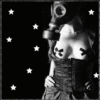1.b. THe XIXth Century Vampire
← Mentorships

The Austrian and German roots of the XIX-th century vampire
Vampire fiction is rooted in the 'vampire craze' of the 1720s and 1730s from the Austro-Hungarian Empire, which culminated in the somewhat bizarre official exhumations of suspected vampires Peter Plogojowitz and Arnold Paole in Serbia under the Habsburg Monarchy. One of the first works of art to touch upon the subject is the short German poem The Vampire (1748) by Heinrich August Ossenfelder, where the theme already has strong erotic overtones: a man whose love is rejected by a respectable and pious maiden threatens to pay her a nightly visit, drink her blood by giving her the seductive kiss of the vampire and thus prove her that his teaching is better than her mother's Christianity. Furthermore, there have been a number of tales about a dead person returning from the grave to visit his/her beloved or spouse and bring them death in one way or another, the narrative poem Lenore (1773) by Gottfried August Bürger being a notable 18th century example. One of its lines Denn die Toten reiten schnell ("For the dead travel fast") was to be quoted in Bram Stoker's classic Dracula. A later German poem exploring the same subject with a prominent vampiric element was The Bride of Corinth (1797) by Goethe, a story about a young woman who returns from the grave to seek her betrothed:
From my grave to wander I am forced
Still to seek the God's long server'd link,
Still to love the bridegroom I have lost,
And the lifeblood of his heart to drink.
The story is turned into an expression of the conflict between Heathendom and Christianity: the family of the dead girl are Christians, while the young man and his relatives are still pagans. It turns out that it was the girl's Christian mother who broke off her engagement and forced her to become a nun, eventually driving her to death. The motive behind the girl's return as a "spectre" is that "e'en Earth can never cool down love". Goethe had been inspired by the story of Philinnion by Phlegon of Tralles, a tale from classical Greece. However, in that tale, the youth is not the girl's betrothed, no religious conflict is present, no actual sucking of blood occurs, and the girl's return from the dead is said to be sanctioned by the gods of the Underworld. She relapses into death upon being exposed, and the issue is settled by burning her body outside of the city walls and making an apotropaic sacrifice to the deities involved.
The first mention of vampires in English literature appears in Robert Southey's monumental oriental epic poem Thalaba the Destroyer (1797), where the main character Thalaba's deceased beloved Oneiza turns into a vampire, although that occurrence is actually marginal to the story. It has been argued that Samuel Taylor Coleridge's poem Christabel (written between 1797 and 1801, but not published until 1816) has influenced the development of vampire fiction: the heroine Christabel is seduced by a female supernatural being called Geraldine who tricks her way into her residence and eventually tries to marry her after having assumed the appearance of an old beloved of hers. The story bears a remarkable resemblance to the overtly vampiric story of Carmilla by Joseph Sheridan Le Fanu (1872).
The XIX-the century vampire in the European literature
In a passage in his epic poem The Giaour (1813), Lord Byron alludes to the traditional folkloric conception of the vampire as a being damned to suck the blood and destroy the life of its nearest relations:
Lord Byron in Albanian Costume, painted by Thomas Phillips in 1813
But first, on earth as vampire sent,
Thy corse shall from its tomb be rent:
Then ghastly haunt thy native place,
And suck the blood of all thy race;
There from thy daughter, sister, wife,
At midnight drain the stream of life;
Yet loathe the banquet which perforce
Must feed thy livid living corse:
Thy victims ere they yet expire
Shall know the demon for their sire,
As cursing thee, thou cursing them,
Thy flowers are withered on the stem.
Byron also composed an enigmatic fragmentary story concerning the mysterious fate of an aristocrat named Augustus Darvell whilst journeying in the Orient — as his contribution to the famous ghost story competition at the Villa Diodati by Lake Geneva in the summer of 1816, between him, Percy Bysshe Shelley, Mary Shelley and John William Polidori (who was Byron's personal physician). This story provided the basis for The Vampyre (1819) by Polidori. Byron's own wild life became the model for Polidori's undead protagonist Lord Ruthven. According to A. Asbjorn Jon 'the choice of name [for Polidori's Lord Ruthven] is presumably linked to Lady Caroline Lamb's earlier novel Glenarvon, where it was used for a rather ill disguised Byronesque character'.
An unauthorized sequel to Polidori's tale by Cyprien Bérard called Lord Ruthwen ou les Vampires (1820) was attributed to Charles Nodier. Nodier himself adapted "The Vampyre" into the first vampire stage melodrama, Le Vampire. Unlike Polidori's original story Nodier's play was set in Scotland. This in turn was adapted by the English melodramatist James Planché as The Vampire; or, the Bride of the Isles (1820) at the Lyceum (then called the English Opera House), also set in Scotland. Planché introduced the "vampire trap" as a way for the title fiend to appear in a dream at the beginning and then to vanish into the earth at his destruction. Nodier's play was also the basis of an opera called Der Vampyr by the German composer Heinrich Marschner who set the story in a more plausible Wallachia. Planché in turn translated the libretto of this opera into English in 1827 where it was performed at the Lyceum also. Alexandre Dumas, père later redramatized the story in a play also entitled Le Vampire (1851). Another theatrical vampire of this period was 'Sir Alan Raby' who is the lead character of The Vampire (1852), a play by Dion Boucicault. Boucicault himself played the lead role to great effect, though the play itself had mixed reviews. Queen Victoria, who saw the play, described it in her diary as "very trashy".
A milestone in vampire literature was Elizabeth Caroline Grey's The Skeleton Count, or The Vampire Mistress (1828), believed to be the first vampire story published by a woman. An important later example of 19th century Vampire fiction is the penny dreadful epic Varney the Vampire (1847) featuring Sir Francis Varney as the Vampire. In this story we have the first example of the standard trope in which the vampire comes through the window at night and attacks a maiden as she lies sleeping.
Heathcliff in Emily Brontë's Wuthering Heights (1847), is suspected by his housekeeper of being a vampire, in the final chapter of that novel.
Fascinating erotic fixations are evident in Sheridan le Fanu's classic novella Carmilla (1872) which features a female vampire with lesbian inclinations who seduces the heroine Laura whilst draining her of her vital fluids. Le Fanu's story is set in the Duchy of Styria. Such central European locations became a standard feature of vampire fiction.
Another important example of the development of vampire fiction can be found in three seminal novels by Paul Féval: Le Chevalier Ténèbre (1860), La Vampire (1865) and La Ville Vampire (1874). Marie Nizet's Le Capitaine Vampire (1879) features a Russian officer, Boris Liatoukine, who is a vampire.
The most famous Serbian vampire was Sava Savanović, famous from a folklore-inspired novel by Milovan Glišić.
Bram Stoker's Dracula (1897) has been the definitive description of the vampire in popular fiction for the last century. Its portrayal of vampirism as a disease (contagious demonic possession), with its undertones of sex, blood, and death, struck a chord in a Victorian Britain where tuberculosis and syphilis were common. A decade before in 1888, the press had sensationalized Jack the Ripper's sexualized murders of prostitutes during his reign of terror in east London.
The name Count Dracula was inspired by a real person, Vlad Ţepeş (Vlad the Impaler). Ţepeş was a notorious Wallachian (Romanian) prince of the 15th century, also known as Vlad III Dracula. Unlike the historical personage, however, Stoker located his Count Dracula in a castle near the Borgo Pass in Transylvania, and ascribed to that area the supernatural aura it retains to this day in the popular imagination.
Stoker likely drew inspiration from Irish myths of blood-sucking creatures. He was also influenced by Le Fanu's Carmilla. Le Fanu was Stoker's editor when Stoker was a theatre critic in Dublin, Ireland. Like Le Fanu, Stoker created compelling female vampire characters such as Lucy Westenra and the Brides of Dracula.
Stoker's vampire hunter and vampire expert Abraham Van Helsing was the archetype of all subsequent such characters in vampire literature.
The vampire in the arts of the XIX-th century
'The Vampire' (1897) by Philip Burne-Jones depicts an alluring female vampire crouched over a male victim. The model was the famous actress Mrs Patrick Campbell. This femme fatale inspired a poem of the same name (also 1897) by Rudyard Kipling. Like much of Kipling's verse it was incredibly popular, and its inspired many early silent films whose 'vampires' were actually 'vamps' rather than being supernatural undead blood-suckers. The poem's refrain: A fool there was . . . , describing a seduced man, became the title of the popular film A Fool There Was (1915) which made Theda Bara a star, and the archetypal cinematic 'vamp'.
Curator of the page: Dragonrouge
RECENT FORUM POSTS
Noble Sire (166)
What Are You Listening To?
| Capricorn at Her Feet by: Moonspell... |
04:29 - December 24 2025
READ POST

Venerable Sire (132)
Answer In Song
| Cherry pie-WarrantDescribe your favorite movie |
23:19 - December 01 2025
READ POST

Premiere Sire (120)
REAL VAMPIRES LOVE VAMPIRE RAVE
Vampire Rave is a member of
Page generated in 0.0408 seconds.





